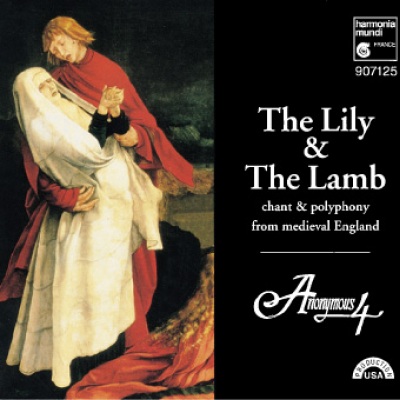
The Lily & The Lamb
Chant and Polyphony from Medieval England If one’s idea of the importance of Jesus’ mother Mary came solely from medieval English music and poetry, one would be very surprised to learn how little she is actually mentioned in Christian scriptures. For she is more central to the spiritual life of medieval Europe, especially in Britain, than her biblical role suggests. By the twelfth and thirteenth centuries Mary had been transformed into a goddess-like figure. As a subject for art, poetry and music, no religious character—no saint, not even God—surpassed her. Especially in musical texts and poetry pleading for forgiveness and understanding, it was gentle mother Mary who interceded at the throne of ultimate justice and was not to be denied. She was invested with an immense, godlike power and the empathy of a human woman. It was through Mary that humanity could touch divinity. The story of Jesus’ self-sacrifice and regeneration has many parallels in ancient religions. This account is powerful and moving enough in itself, but in the Middle Ages, a time when the loss of one or even several children was not uncommon, the sight of Jesus’ death through his mother’s eyes must have made it more forcefully immediate. In this highly personalized vision, we see the suffering of helpless people rather than the struggle of superbeings; Olympian drama is transformed into human tragedy, with Mary at its heart.
